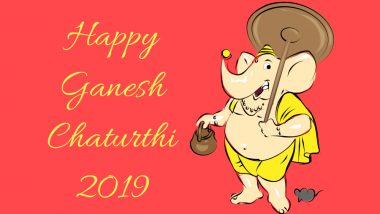Ganesh Chaturthi, also known as Ganesh Chavithi, Vinayaka Chaturthi or colloquially Ganpati is a 10-day festival celebrated in states such as Maharashtra, Madhya Pradesh, Karnataka, Goa, Gujarat, Chhattisgarh and Telangana. The festivities for Ganesh Chaturthi are large scale, with big pandals, pujas and cultural activities that bring people together. It became a public festival after Indian freedom fighter Lokmanya Tilak popularised it to unite Indians under the British rule. Today, the festival of Ganesh Chaturthi is celebrated with great pomp and show. People rigorously clean their homes before installing the idol of their beloved “Bappa.” The festival, which runs for ten days, is celebrated with a mix of religious and cultural programmes. But what is the story of Ganesh Chaturthi, which brings people together?
The History
There are no clear accounts of the history of the festival. But according to historians, Ganesh Chaturthi was first championed by Chatrapati Shivaji Maharaj. It was again pioneered by Lokmanya Tilak with a view to unite Indians against the British rule. The purpose, beyond the religious, was to snub the British who opposed mass Hindu gatherings in public places. Benefits of Panchamukhi Ganesha Idol & What Each of The Five Heads of Ganpati Represents.
Legends and Stories of Ganeshotsav
Birth of Ganesha
The birth of Ganesha or Ganpati is usually associated with the festival of Ganesh Chaturthi. Ganesha was born to Lord Shiva and Goddess Parvati. According to the Shiva Purana, once when Parvati was going to take a bath, she prepared a turmeric paste to apply on her body. She shaped the paste into a humanoid form and breathed life into it. A boy was thus born whom Parvati accepted as her own. She asked him to guard the main gates as she took a bath and to stop anyone from coming inside.
Shiva who was just out of his meditative trance, wanted to see his wife Parvati. But he was surprised when an unknown boy stopped him from entering the gate. Even after reasoning with him, the boy wasn’t ready to let Shiva in. Angered by this, Shiva took out his Trishul (trident) and struck the boy with it, instantly decapitating him.
Parvati’s sorrow knew no bounds when she saw her son lying dead. Her grief turned into fury as she took on her divine, multi-armed form. She vowed to destroy the entire creation. Lord Brahma, the creator of all forms of life pleaded with her, asking her to take back her vow. She agreed only under two conditions: first, her son should be brought back to life and second, he should be worshipped before any god.
Shiva obliged. He put his Shiva-dutas to the task and asked them to return with the head of the first dead creature they found, provided it faced the north. As legends would have it, they returned with an elephant’s head. Lord Brahma placed the elephant’s head on the boy and breathed life into him. And he came to be known as Gajanana or elephant-faced and Ganesha or lord of all the ganas (classes of creation).
Ganesh Chaturthi Wishes 2019 (Watch Video):
Ganesha Curses the Moon
According to legends, Lord Shiva appointed Ganesha as the head of his army. It was an occasion of pride for parents and for the son. As a mark of respect, Ganesha prostrated before his parents to touch their feet and seek their blessings. But since he had a huge belly, he couldn’t completely lie down on the ground and his body moved like a seesaw. The moon who was witness to this episode couldn’t help but laugh.
Ganesha, however, wasn’t too pleased. He was incensed by the moon’s audacity. He cursed him that the moon, who took great pride in his radiance, will see his beauty reduced day by day. The moon realised his folly and begged Ganesha for forgiveness. Why Should You Not Look at the Moon on Ganesh Chaturthi, Is There a Scientific Explanation? (Watch Video).
Ganesha then reversed the curse: after waning, the moon will wax again to his full glory. But he stated that anyone who cast a glance at the moon on its fourth day (chaturthi) of waxing, even by accident, will have his or her name smeared.
So, for the fear of ill reputation, people religiously avoid looking at the moon on the chaturthi.
The festival is celebrated to worship the elephant-headed god Ganesha or Ganpati. He’s known as the remover of obstacle or Vigna Harata. Hence, Lord Ganesha is usually worshipped at the beginning of any new endeavour. Apart from helping devotees succeed in their task, Ganesha is also known for his wisdom, knowledge and love for food. For all the devotees of the elephant-headed god, a Happy Ganesh Chaturthi!
(The above story first appeared on LatestLY on Aug 30, 2019 05:00 PM IST. For more news and updates on politics, world, sports, entertainment and lifestyle, log on to our website latestly.com).













 Quickly
Quickly





















